In the final weeks toward the first ever use of an atomic bomb in warfare, a list of Japanese cities was compiled by the US military and scientists as potential targets to bring down the Asian superpower. Each city was carefully selected based on the foreseen impact that such an attack would have on Japanese public opinion regarding the country’s position in World War II, with the expected result of a surrender to the Allies. Among the cities put on the list was Kyoto, the capital of Japan for more than 1,000 years until the relocation of the seat of power to Tokyo in 1869. Apart from its historical significance, Kyoto was chosen as a target also because it was home to many factories as well as universities, and dropping an atomic bomb on the city was believed to bring an imminent end to the war.
The U.S. Secretary of War Henry L. Stimson noticed that Kyoto was on the list and ordered its removal, but the military insisted. Two weeks before the scheduled bombing, Kyoto was still on the list, and this prompted Stimson to go directly to President Truman. He argued that Japanese bitterness about the complete destruction of Kyoto would make it harder for them to reconcile with the U.S. than with the Russians. The last thing Truman wanted was to push another country in Asia closer to the Soviet Union, hence his approval to remove Kyoto from the list.
On August 6 and 9, 1945, “Little Boy” and “Fat Man” were dropped on Hiroshima and Nagasaki respectively. Together, the atomic bombs killed at least 120,000 people and forced Japan to surrender on August 15, effectively ending World War II the way the U.S. had wanted. In Kyoto, centuries-old temples, shrines, palaces, and machiya (wooden townhouses) were left unscathed. Despite losing the conflict, the Japanese at least still had Kyoto as a bastion of their cultural identity, one to reflect on in the long recovery of their nation from the debris of war.
Almost half a century later, in 1994, the surviving monuments from Kyoto’s past were listed as UNESCO World Heritage sites. That might not have happened without Stimson’s insistence to spare the ancient city from wartime bombing, although a personal reason might have motivated him even more. Some historians believe that the Secretary of War’s effort to save Kyoto was largely attributed to his connection to the city itself. During his tenure as the governor of the Philippines, Henry Stimson spent his honeymoon in Kyoto and he was also known as an admirer of Japanese culture.
Whatever Stimson’s reasons were, the decision made by President Truman has allowed people from all across the globe today to marvel at the ingenuity of Japanese architecture and the restrained yet elegant aesthetics found in the age-old streets and temples of Kyoto. The city of 1.5 million people boasts historical treasures at every corner: from the massive wooden pillars of Kiyomizu-dera to Kinkaku-ji whose gilded exterior compensates for its rather modest size; the imposing sanmon (Japanese Buddhist temple gate) of Chion-in to the endless rows of small vermilion torii (gate of a Shinto shrine) at Fushimi Inari Taisha; the quintessentially Japanese garden of Ginkaku-ji to the chirping “nightingale floors” of Nijo Castle; and a wealth of other heritage sites harking back to centuries past. Being Japan, however, technology is wholeheartedly embraced even in an ancient place like Kyoto. Despite the high-tech check in experience that welcomed us to our hotel, the lodgings were fitted with tatami mats and shoji screens which gave our room a very traditional feel. These little touches reminiscent of the past provided us not only with a cozy place to stay for the next four nights, but also a fitting start for our exploration of Japan’s fascinating former capital.
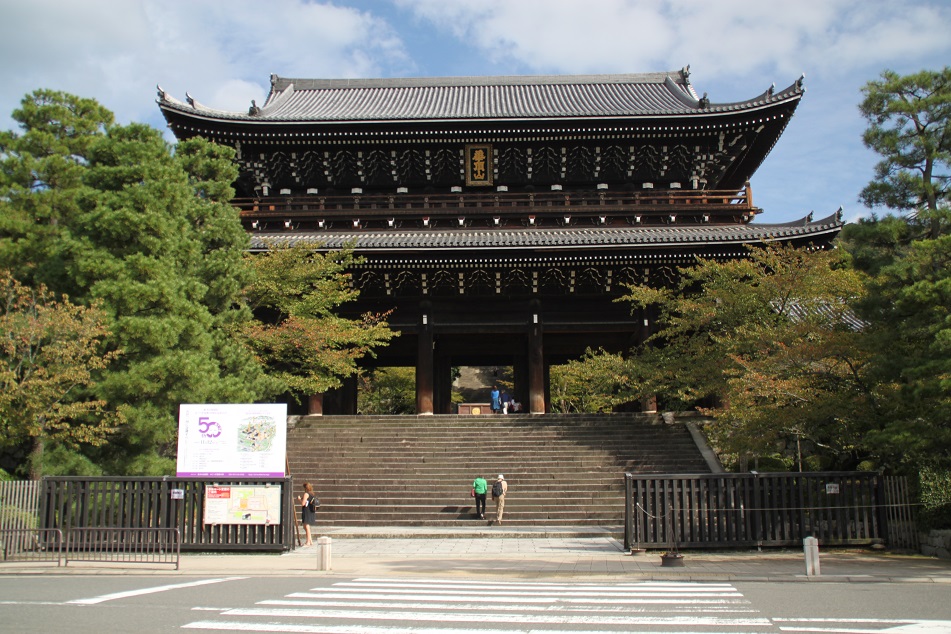
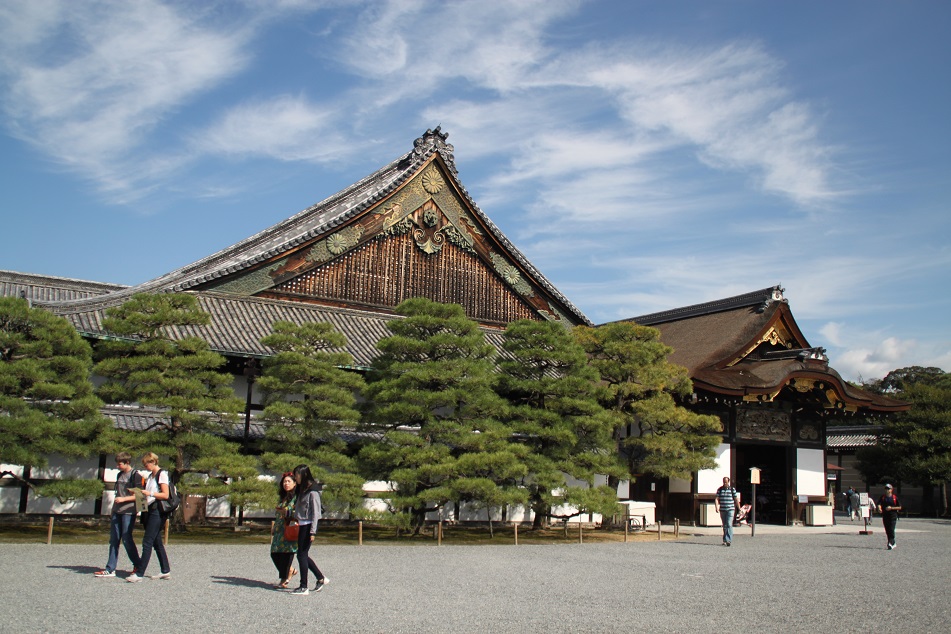
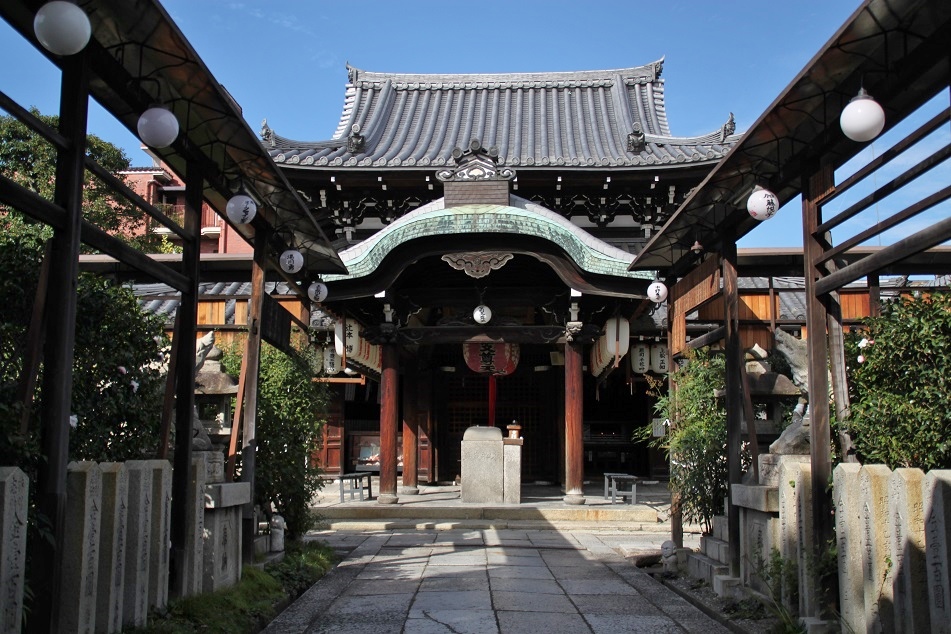


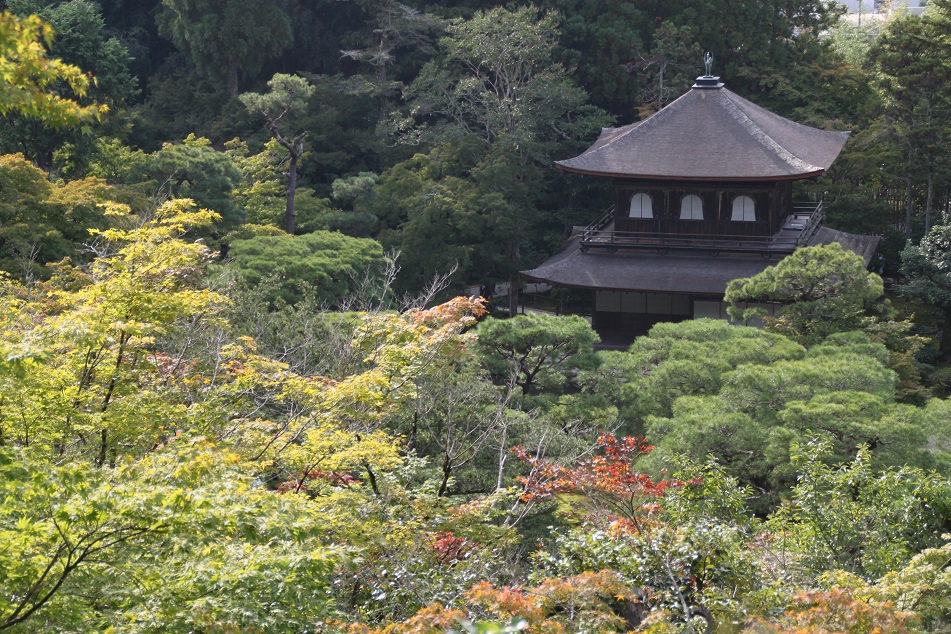

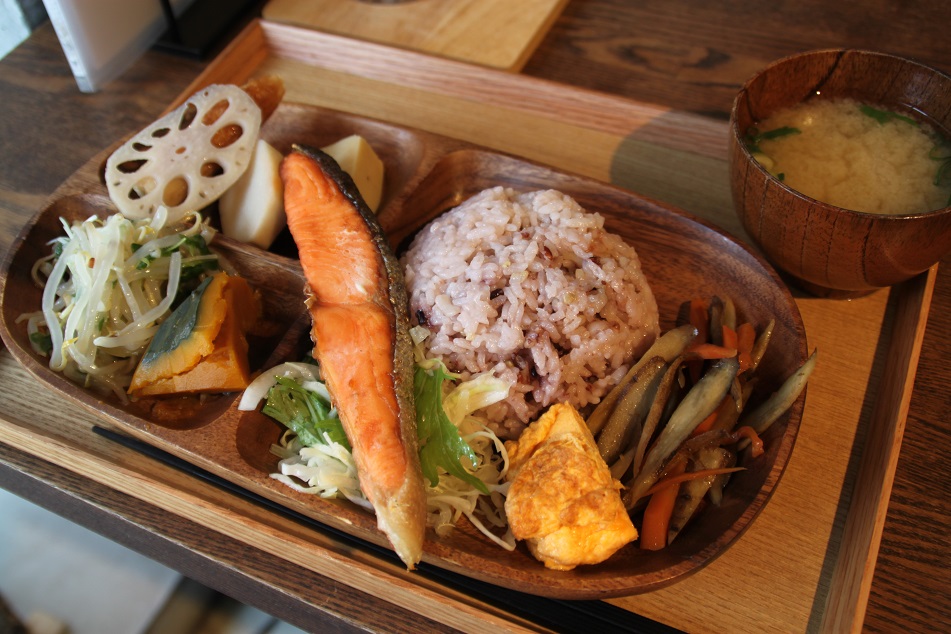


These pictures are amazing.
LikeLike
Glad you enjoyed them, Myra! Thanks for dropping by.
LikeLiked by 1 person
What a beautiful preserved culture!
LikeLike
The plethora of ancient temples and structures in Kyoto is a reflection of Japan’s long and rich history. Truly a perfect city for all history and culture lovers!
LikeLiked by 1 person
So well-written. It is amazing how something that might seem so relatively insignificant, like where someone spent their honeymoon, can affect history so drastically. Thanks for this piece, I learned something important. 🙂
LikeLike
Much appreciated! I wonder if there were more people like him who spent their honeymoons all over the globe, a lot more historical places could have been saved from destruction, hence the importance of seeing the world. Thanks for reading!
LikeLiked by 2 people
I agree! That’s why I love the arts, too…they can take people to new places without them really having to go. 🙂
LikeLiked by 1 person
I’ve studied WW2 and I’ve read many facts about the launch of Fat Man and Little Boy, yet I never knew that Kyoto was in the target list. That history about the Secretery of War’s honeymoon and his connection to the city may indeed have changed history and is probably one of the reasons why Japan is nowadays the super potency it is. Nice photos by the way, I really love the oriental architecture!
LikeLike
I didn’t know about it either until I did further research about Kyoto. The lost would have been incomprehensible and horrific had the atomic bomb was dropped on Kyoto, making the Japanese even more resentful of the Americans and reconciliation harder. Thanks for reading, Luis!
LikeLiked by 1 person
A fascinating report on the former and ancient capital of Japan! I never knew until I read your post that Kyoto was on the target list for a nuclear attack. Strange how one man can make a difference in the survival of a city.
LikeLike
Many people, including myself, was in disbelief when they learned that Kyoto was initially on the list of places where the atomic bomb would be dropped. As a comparison, the ancient temples of My Son in Vietnam were heavily damaged by the U.S. air raids during the Vietnam War. Those wooden structures in Kyoto would certainly not have been able to survive the atomic bomb. Thanks for reading, Peter!
LikeLiked by 1 person
It’s frightening how one person can have so much influence on the lives of thousands of innocent people. Luckily for Kyoto, it was in their favour.
LikeLike
There’s a line from Spider-Man (played by Tobey Maguire) which resonates with what you said: “With great power comes great responsibility.” Unfortunatly, many people rose to power not with this in their minds, rather they only cared about how to accumulate even more power and amass wealth.
LikeLiked by 1 person
Great intro to Kyoto … and by the way, you are now officially my favorite history teacher! Although some of the more out-of-the-way places and their stories can overwhelm me with unfamiliar names, your ability to provide panoramic views of world history are just the perfect connecting pieces I need and enjoy!
LikeLike
You’re too kind, Lex. But thanks for reading all those posts I wrote and sharing your thoughts along the way. The first time I got interested in history was back in junior high school, thanks to this history textbook which I found very much like a story book. Suddenly those historical facts came to live through the author’s ingenious way of telling the past. I’d be happy if I could be half as good as him!
LikeLiked by 1 person
Bama I confess that i did not know Kytoto had been ‘scheduled’ to be one of the cities destroyed. It seems hard to even imagine the loss. These days as there is more rhetoric about nuclear war being bantered about I wonder if this horrofic chain of events has been forgotten?
LikeLike
It surprised everyone today, including me. Sadly some of us will just never learn, allowing history to repeat itself over and over again. My hope is that there will be more people who want to see a peaceful world than those who prefer otherwise.
LikeLiked by 1 person
We can only hope Bama.
LikeLiked by 1 person
Wonderful post Bama. I sure didn’t know they were thinking of bombing Kyoto, and thank goodness they didn’t. I’m drooling over your photos and can’t wait to see it all for myself. We’re going to Japan in May.
Alison
LikeLike
Thank goodness they didn’t, indeed. I’m sure you’ll enjoy Japan as much as I did (and pretty much everyone who has been to the country did). Be prepared for kawaii overload though! 😀
LikeLiked by 1 person
Another great post!
LikeLike
Glad you enjoyed this post, John & Susan!
LikeLike
Fascinating how a personal decision may have affected a political one. The layers and narratives hidden underneath historical facts reveal such interesting facets of our human nature.
LikeLike
And if we stay curious about what happened in the past and keep looking for those layers of truth, we might understand more than we think we would. Thanks for reading!
LikeLiked by 1 person
This is a profound prologue of Kyoto. Thank you for sharing this Bama.
LikeLike
And thank you for reading, Anne! Kyoto left a deep impression on me so much so I have to write several posts about the heritage sites in the city, hence the prologue.
LikeLiked by 1 person
That will be very nice. Looking forward to the next post of Kyoto 🙂
LikeLiked by 1 person
Kyoto is such a treasure. I didn’t know the story about Truman. Thank you for sharing. It feels very timely, given the events between North Korea and the U.S. Hopefully cooler heads will prevail and we aren’t doomed to repeat some very terrible history.
LikeLike
Too many unnecessary provocations lately, as if all the wars and conflicts in the world were not enough. Sometimes people need to face their darker side before they get better, but I surely hope that is not the case with the tension regarding to North Korea.
LikeLiked by 1 person
Hi! I am just new in blogging and I just want to say that Japan is one of bucket list to travel someday. Hoping to read more about Japan.
LikeLike
Hello there! Thanks for dropping by! In the upcoming weeks I will be posting more stories from Japan (as well as Australia and other places that I’ve been to but haven’t written anything about). Hope that day when you get the chance to visit Japan comes sooner than later.
LikeLiked by 1 person
Yay! Excited to read all about it. I was checking your other blogs, i might read them later, looks interesting.. 🙂
LikeLike
Really appreciate your time reading my blog posts! 🙂
LikeLiked by 1 person
Looking forward in your next destination.. 😉
LikeLike
Great read. Quite honestly, I was not aware of many of these things you have mentioned in your post. It is really interesting and shows a deep insight into Kyoto and it’s past. Looking forward to your next posts.
LikeLike
Thanks Soorya! Glad this post helped you learn something about Kyoto’s history. My next post will be on the city’s iconic golden and silver pavilions — I will publish it tomorrow morning.
LikeLike
Great one!
LikeLike
Glad you enjoyed this post! Thanks for reading.
LikeLike
Pingback: Kyoto’s Pavilions of Beauty | What an Amazing World!
Reading your stories always reminds me of the times I had to do readings or research on my history lessons. It just resonates with me when I read..and bring me back to those times when I had to read about the different perspectives of history..I studied cold war during high school and had to do lots and lots of readings then…haha…I’ve usually looked at Kyoto from a touristy aspect but never really considered the impact of war on it till now…so thanks for making me think about it. It’s lovely to hope that there are still some things that can still be preserved till today. 🙂
LikeLike
I, too, learned about the world history at school. But traveling really brings those stories to life and gives more nuanced perspectives of what happened in the world — only if one has an open mind and is ready to be confronted with truths which can be inconvenient. Really appreciate your time reading this post and sharing your thoughts!
LikeLiked by 1 person
True, I do agree that travelling really opens up your mind to many different experiences and perspectives – if you are willing enough to learn. 🙂
LikeLiked by 1 person
This was so good! You made me feel like I was there! Thank you for sharing!
LikeLike
Much appreciated, Natalake! I’ve been experiencing the world vicariously through other people’s blog posts as well, so I’m glad this post did just that to you. Thanks for reading!
LikeLike
… nice to introduce history of Kyoto as well (… as I see many tourists .. nice to know someones learning historical aspects and introduce better way – have a happy travel..!).
LikeLike
Glad you enjoyed this post, Naomi!
LikeLiked by 1 person
Japan… I dream of going back someday. My first visit back in 1996 brought me to Kyoto as well. I immediately fell in love with the city: the amazing temples and gardens, the old Gion district, Philosophers Path, and so much more. I knew the story about Kyoto being on the list of target cities. Reading your story reminded me of the destruction of Palmyra in Syria only recently. It seems that with short-term thinking, the destruction of artistic and cultural wealth seems to be justifying the (short-term) cause. I am so happy for those who dare to stand up against short-term thinking and understand the importance of our cultural assets for generations to come. Great post.
LikeLike
I just realized that your first visit to Kyoto was just a year after the great earthquake that shook Kobe and its surrounding regions. Did you see any damage to the historical sites in Kyoto? It would have been such an incomprehensible loss had the bomb been dropped on the ancient Japanese capital! But you’re right, unfortunately destruction to invaluable sites dating back centuries, or even thousands of years ago, is still happening in modern time. However, some good news does emerge from those places. I’ve been following the Twitter account of this guy who works at the National Museum in Baghdad. He shares photos showing restoration works at some of Iraq’s historical sites, as well as modern-day Iraqis visiting the museum so they can reconnect with their past. Thanks for reading and sharing your story, Emiel!
LikeLike
It’s quite shocking to think that Kyoto was once earmarked as a potential target for the atomic bomb – good thing Stimson stepped in and persuaded President Truman to take it off the list! As ever, your photos are an enticing glimpse into the beauty of the place… my favorites are the one of Yasaka Pagoda and the leading shot of the colossal gate at Chion-in, which I had been wanting to see ever since I was in middle school.
LikeLike
You know, I realized that a lot of places we went to were actually those we had dreamed of visiting since we were much younger — a proof that we should never give up on our dreams! Along the way, we learned about interesting facts like how Kyoto was saved from the atomic bomb, making the travels we make even more fulfilling. Thanks for kind words, James!
LikeLiked by 1 person
Thank God for Stimson’s intervention! A wonderful account, as beautifully narrated as always Bama, and evocative photos that transport me right back to Kyoto. Love the perspective of the main courtyard of Heian Shrine and the shot of Ginkaku-ji through the foliage of the Zen garden in particular.
LikeLike
Much appreciated, Madhu! It must have been a big relief for him back then as it is for us today. Imagine how much would have been lost if one of those atomic bombs was dropped on Kyoto! Heian Shrine was James’ idea, and so was Ginkaku-ji. Both were beautiful and intriguing in their own way.
LikeLike
Is Chion-in temple worth a visit?
LikeLike
Actually Chion-in’s main hall is undergoing major restoration works which will be completed in 2019. But the Sanmon — the temple’s impressive main gate — is enough reason to visit Chion-in. In my next post I will write about it, as well as an important Shinto shrine at the heart of Kyoto.
LikeLike
So are the statues placed somewhere? Like..some other hall is made the prayer hall for the time being then? Looking forward to your next post though.
LikeLike
When I went the main hall was completely covered with scaffolding, so maybe the statues were stored somewhere else. But I can’t tell for sure.
LikeLike